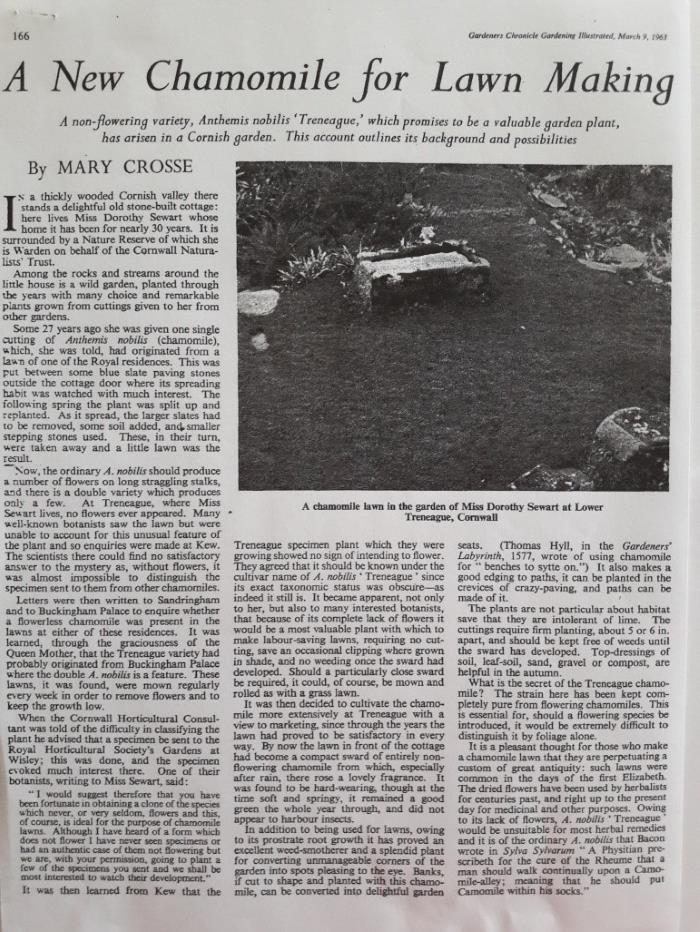Morehavens Chamomile Nursery
Chamomile (camomile) lawns - a history
The Chamomile Lawn has a long tradition in England. The Elizabethans enjoyed the sweet fragrance that filled the air as they walked on chamomile. The poet Spencer in 1574 wrote of "Breathful Camomile" as he trod on the soft, springy lawn. Thomas Hyll, in 1577, wrote of using chamomile for "benches to sytte on".
The most famous chamomile lawns are at Buckingham Palace. As an integral part of the lawns, each sucessive head gardener has taken great effort to conserve, maintain and cultivate the chamomile to make sure it thrives. Patches are present on the Main Lawn where the garden parties take place as well as in the Rose Garden and near the Herbaceous Border.
Chamomile lawns in the past had one disadvantage - they needed cutting. In the 1930s, Dorothy Sewart planted a chamomile cutting in the garden of her 18th Century stone cottage near Wadebridge in Cornwall. To her surprise this chamomile spread to form a low growing plant which never flowered. It formed a fragrant, rich green lawn which did not turn brown in dry weather. She had been extremely fortunate in producing a clone of the variety Treneague.
We are specialist growers of Treneague which forms a fragrant lawn that never needs mowing.

An article from the March 1963 edition of Gardeners Chronicle Gardening Illustrated magazine, heralding the chamomile lawn.